Robinson’s Best Selling Helicopter
Robinson’s new R22B II aims to help pilots soar.
ARTICLE DATE: September 1996 – Reporting from Torrance, CA.
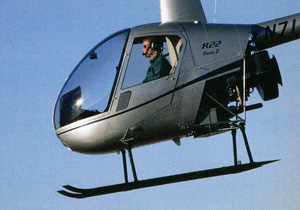
The physical differences between the R22 Beta and the R22 Beta II are indiscernible, despite the larger piston.
YEARS AGO, Frank Robinson aimed to build an everyman’s helicopter having an affordable price and low operating costs. The result was the two-seat, piston powered Robinson R22, more than 2,600 of which are flying today. The R22 was followed by the four-seat, piston R44.
But in early 1995, the safety of Robinson helicopters came under scrutiny by the National Transportation Safety Board (NTSB). Alarmed by a number of accidents, the NTSB was even calling for the FAA to ground the helicopters and review their certifications.
No Robinsons were grounded, but the FAA called upon an assortment of independent helicopter experts to help it investigate the helicopters’ design and performance.
Today, the reputations of both models have been cleared:
The FAA and the NTSB found no flaws in their designs.
On the other hand, their conclusions point to the fact that instructors need to exercise great care to make students sufficiently aware of the characteristics of a light machine with a teetering rotor system.
No great surprises there.

The conclusion confirms a paradox:
To produce the R22 Beta Helicopter – an everyman’s helicopter, certain compromises were unavoidable. The main one was that the rotor system had to be relatively light.
There’s no escaping the reality that this lack of mass — and its associated low inertia — is tricky to handle if primary power is interrupted. Immediate action to unload the rotor system to keep the blades spinning at the desired rpm is crucial and, literally, vital.
Over the years, a great deal of attention has been paid to training pilots to produce the correct reflexive responses. Frank Robinson has contributed as much to this process as any of the certificating authorities.
His instructor safety course is thorough in teaching that loss of main-rotor control can be prevented by taking care of business in a number of areas:
-
Rotor rpm, for instance, must be maintained by manipulating the throttle and collective in the correct relationship;
-
Pilots must not abuse the power limitations of the R22 Beta Helicopter Lycoming 0-320 piston engine;
-
And crews must avoid simple but deadly mistakes, such as shutting off the engine while adjusting the fuel mixture or ignoring the build-up of carburetor ice.
EDITOR: Having a low inertia rotor system is not necessarily a bad thing. Both types have their advantages; LOW INERTIA – allows easier low RPM recovery with lower load on the engine and drive system, highly responsive. HIGH INERTIA – easier to maintain any given RPM, allows easier transition to autorotation and improved soft landings.
With the advent last year of a new R22 Beta version, the R22 Beta II, a significantly more powerful helicopter is available to addresses all these points. It changes much for a generation of R22 pilots who had to discipline themselves to handle the helicopter’s effective but somewhat rudimentary systems.
For instance, many pilots (including me) learned to fly a R22 Beta without the throttle governor system, which was offered only as an option. In a squeeze, it was all too easy for neophytes to sometimes forget which way to twist the throttle to stay “in the green.”

Instructors often resorted to simple catch phrases — one dinned into students was that the throttle turned “outboard” to get “outta here.” Another problem, this one potentially catastrophic, was to confuse the fuel-mixture control with the trim control — which was similarly placed, but differently shaped.
The solution was to install a small plastic collar over the fuel-mixture control. Still, the design of the mixture control — a straight push/pull knob – caused apprehension in R22 pilots. Pilots were reluctant to use it because of a fear that it could be pulled too far and inadvertently shut down the engine.
Carburetor icing was also something to watch for (as it is in any non-injected piston engine.) It was met through emphasizing attention to a large, easily read carburetor air temperature (CAT) gauge and making sure the carburetor heat was hoiked on prior to starting an approach.
For the Beta II, though, Frank Robinson wanted to launch a more fundamental approach to safety through an increase in installed power.
“We knew we had problems with people wanting to fly at higher altitudes than the ship’s performance really allowed them to do. The statistics show that the number of people who get themselves into rotor-management problems increases the closer they get to operating and performance margins,” he explained to us.
That, and the fact that high altitudes in many areas of the world limited the R22’s market, prompted Robinson to install into the Beta II an 0-360 engine, compared to the Beta’s 0-320.

The R22 Beta Helicopter powerplant offers 40 more cubic inches of (stroke) displacement, enough to make a significant difference under hot and high conditions. (But not as much as a turbo-charger would. Stay tuned—that’s another story.)
Like the 0-320, the 0-360 is also flat-rated. At continuous power settings, it develops less power than it is theoretically capable of — 180 hp for this version. This approach protects an engine from operating stresses, and hence is a key to maintaining a 2,000-hour time before overhaul.
The Beta II’s 0-360 produces about 131 hp — seven hp more than the O-320 — at the continuous power setting of 2,652 rpm at sea level. The big difference is that it can maintain this output under much higher altitudes.
Figures in Robinson’s Pilot’s Operating Handbook show the difference between the two powerplants most graphically in the extreme case of the hover in ground effect (HIGE) at gross weight and max takeoff power. Here the R22 Beta Helicopter has a pressure altitude performance limit of about 4,800 feet at 40°C; the Beta II tops out at slightly over 7,000 feet.
This is not, however, a strictly apple-to-apple comparison. New FAA certification rules have redefined ground effect as present up to a height equal to 1.5 times the rotor diameter for the Beta II—vs 1.0 for the Beta.
The real “book-to-book” story for Beta II owners is therefore even better than it looks. Robinson does not publish a hover out of ground effect (HOGE) figure for the II, but says this performance can be considered “equal to or better” than the straight Beta’s.
R22 Beta Helicopter: A checkout
Our next stop was at the ramp at Robinson’s ultra-modern Torrance Airport, CA, facility, for a flight in an R22 Beta II. During preflight checks, company test pilot Doug Tompkins showed there are virtually no external differences between the way the new engine fits in the airframe even though longer cylinders add a few inches to both sides of the 0-360.
There’s nothing new or additional to check on the entire helicopter except to notice new “one-piece” pitch horns (replacing adjustable type). The 0-360, in fact, adds only about six pounds (2.7 kg) more weight to the helicopter.
Doug spent time introducing R&W to the three main enhancements an experienced R22 pilot will notice when moving to the II: the throttle governor, a newly positioned vernier-type fuel-mixture control, and a semiautomatic carburetor-assist system. These three workload aids are designed to reduce or eliminate the consequences of pilot distraction.
The governor system is redesigned so that it moves the throttle twist grip only. It used to make small adjustments to both throttle and collective, but pilot feedback, particularly from instructors, suggested changes were needed.
Now the R22 Beta Helicopter pilot will feel a slight “hunting” (automatic twisting) from the throttle as the power setting is changed internally through collective movement or externally from a change in flight conditions.
An amber “idiot light” reminds you that the governor has been switched off (via the familiar throttle switch), and the rotor/engine rpm “matching” gauge exhibits a new, more precise and narrower green range.
This precision is made possible by the effectiveness of the governor — designed to hold the rotor rpm within a well-defined band of between 101% to 104%. The process uses a micro-computer that reads inputs from the engine magneto to sense engine-speed changes and converts them to drive a small electric motor, which in turn drives the throttle grip.
The rpm limits also permit the engine to run at an optimum level for vibration reduction. The new fuel-mixture-control design allows the pilot to make adjustments to the mixture levels by screwing a large, red knob in and out. It is designed like this to make it practically impossible to over-lean the engine to cut-off.
And the control itself has been moved—up and away from its proximity to the trim lever — a long overdue improvement. Accurate use of the mixture control is more important in the Beta II, basically because of the increase in performance at altitude.
The carburetor-assist in the Beta II is an entirely new set-and-forget arrangement that allows the carburetor-heat knob to be turned on and off in relation to movement of the collective. Down collective for an approach — carburetor heat on, and vice versa.
But the carburetor-heat system can be manually adjusted to keep the CAT gauge out of the yellow (caution) range when outside temperatures are between 27°F (-4°C) and 80°F (27°C), or when there’s moisture in the air.
The position of the carburetor ice-sensor probe has also been changed to be more sensitive to ice buildup near the carburetor throttle butterfly valve. A feature we didn’t like, however, is that the carburetor heat lever comes with a little lock-out latch.
The reasoning is obvious: Pilots will want to shut off the assist feature when there’s no icing risk. Who needs warm air blowing into the induction manifold on a hot-and-high approach? But what about pilots forgetting to remove the latch at other times?
What about a careless pilot not noticing a drop in outside air temperature as, say, he flies from cruise down into a river valley at dusk? Doesn’t this simple little addition complicate — rather than reduce — the potential workload/distraction problem?
Frank Robinson explained that a carburetor-heat check prior to takeoff should ensure the latch is in the correct position. But beyond that, it’s up to the pilot to monitor the situation — which is the basis of our skepticism.
We were now ready for a flight with Tompkins to see how it all comes together. Turning the start key, a throatier engine note is immediately noticeable; the R22 Beta Helicopter sounds and feels reassuringly more powerful.
The perception is enhanced during a climb to 5,000 feet, when the helicopter’s vertical speed indicator scarcely drops below 1,000 fpm on this 14°C day. The added power is noticeable, too. In an intermediate cruise at 3,000 feet, we record a healthy 90 knots indicated airspeed (KIAS) with just 21 inches of manifold pressure (MP) set.
R22 Beta Helicopter: Making turns
Tompkins makes a series of left and right turns while moving the collective about in a demonstration of the governor’s tenacity, which appears extremely good. The crossed engine and Nr (rotor) rpm needles stay pinned across the green arc. To a pilot who trained in an R22 without a governor, these “carefree” aspects of throttle handling are a delight.
“The practical benefits are that you can concentrate more on what’s happening outside,” Tompkins says. The governor issue is an important one for the R22 Beta Helicopter. Frank Robinson wants governors mandated on all R22s, by AD airworthiness directive if necessary.
Using the governor is now recommended as standard procedure, except for emergency maneuvers, so the days of “lift and twist” training (collective and throttle coordination) seem to be passing. We practiced a number of autorotation switch the governor switched off, turning it back on again during the flare. The system worked well.
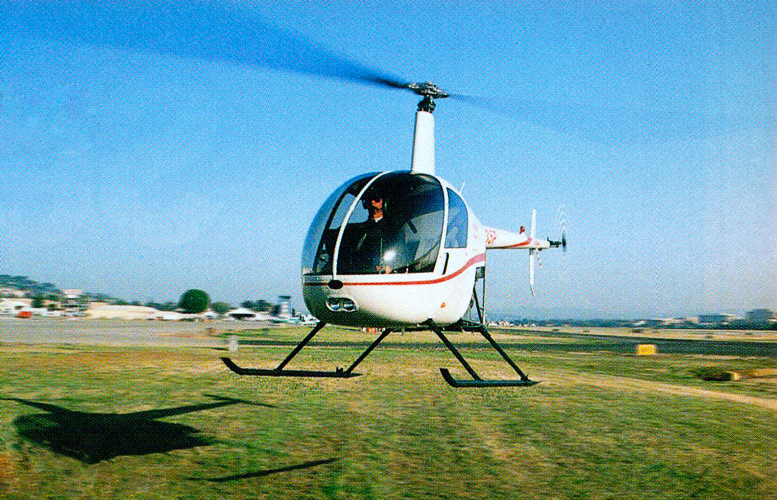
Besides a more powerful piston, Robinson’s new R22 Beta II incorporates several improvements to ease pilot workload.
Using the mixture control will be no problem for anyone with light aircraft training. It’s a simple matter: unscrew the plunger knob until engine roughness is felt and then screw it in slightly until smoothness reappears. This will then be the setting for best power.
In an important demo, Tompkins proved that unscrewing the knob further by several turns still allows the engine to run well enough. “You can be completely confident about it,” he says. “It absolutely will not allow you to kill the engine.”
The R22 Beta II has a basic list price of about $9,000 more than the regular Beta. Production has now switched over to Beta IIs, though “regular” Betas going through the remanufacturing line at Torrance will continue to be accommodated.

An R22 Beta II pilot adjusts the carburetor heat control. The prominent knob in the photo’s top left is the new vernier-type fuel mixture-control, which replaces the push-pull design on earlier R22s.
The R22 Beta Helicopter seems to offer a healthy step up in power that probably will meet expectations of pilots operating on the ragged edge because of high density-altitude conditions—and find new markets there as well. The governor system is a delight to use, as precise as advertised, and seemingly well-engineered.
The change in mixture-control layout is a good idea that’s been long awaited, and the carburetor-assist system—provided the pilot handles it properly (which will, in our opinion, need some focused training)—is a step toward automating this cockpit chore. Otherwise the R22 Beta II remains, in essence, an R22.
The recent record shows clearly that the genius behind the original concept remains justified: The message is that the helicopter is perfectly safe provided the crew treats it with respect. The approach taken with the Beta II meets the pilot more than halfway in this contract.
But in our opinion the real added-value lies in the extra power. From an operational point of view, this R22 Beta Helicopter benefits in every way from it — in terms of safety, performance and, yes, pure enjoyment.

| Robinson R22 Beta II Performance | |
|---|---|
| Engine | 180-hp Textron Lycoming 0-360 |
| Max transmission rating | 131 hp |
| Takeoff transmission rating | 124 hp |
| Max altitude | 14,000 feet |
| VNE at sea level | 102 knots |
| Rate of climb | 1,000 feet per minute |
| Range (sea level, standard tank) | 204 nm |
| Endurance (sea level, standard tank) | 2.9 hours |






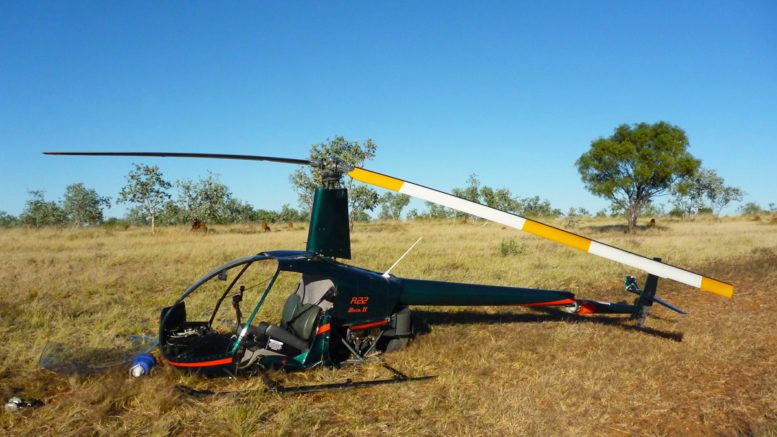


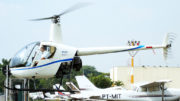
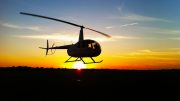
Be the first to comment on "Making The R22 Beta Helicopter Better"